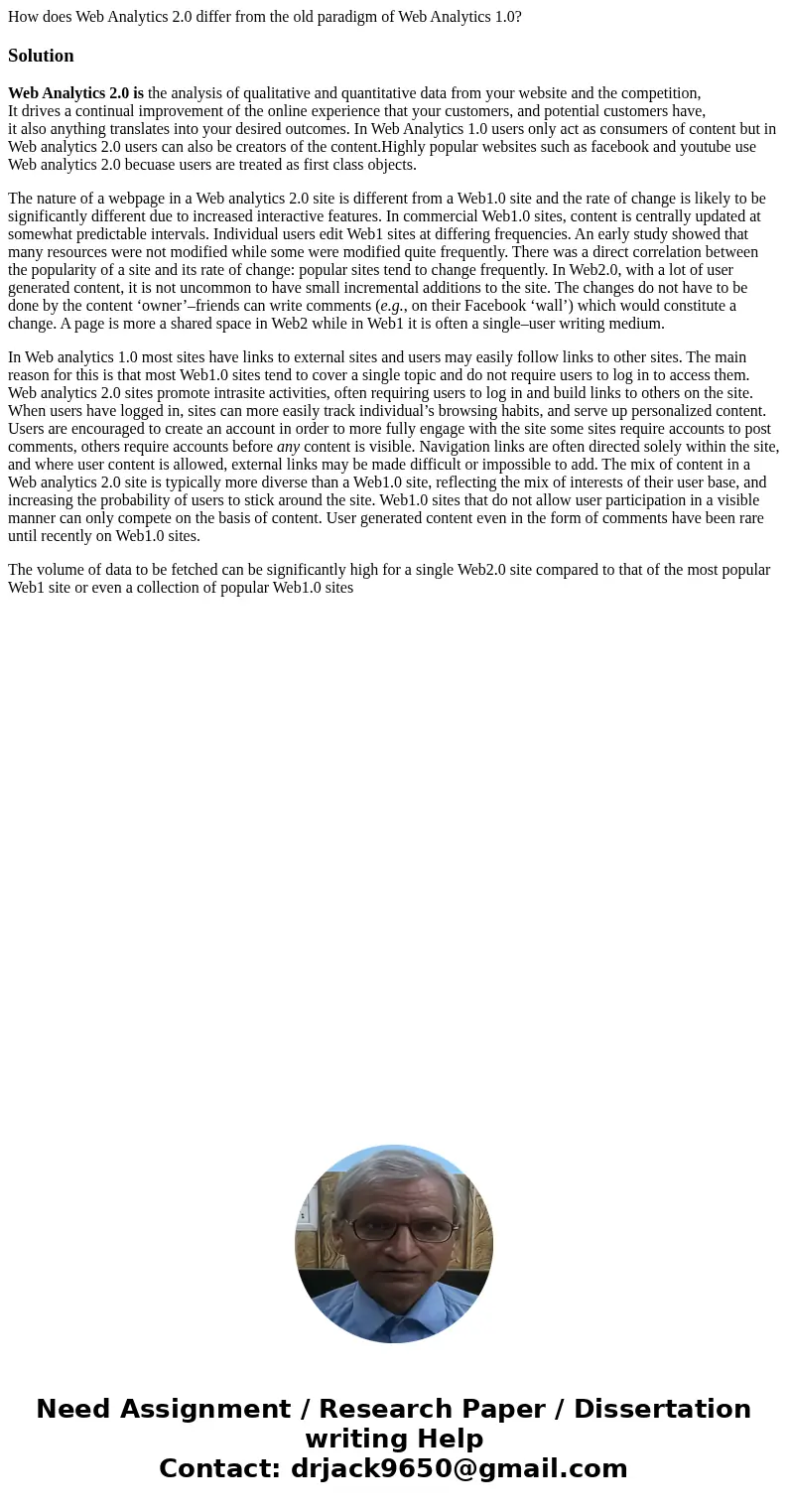How does Web Analytics 20 differ from the old paradigm of We
How does Web Analytics 2.0 differ from the old paradigm of Web Analytics 1.0?
Solution
Web Analytics 2.0 is the analysis of qualitative and quantitative data from your website and the competition,
It drives a continual improvement of the online experience that your customers, and potential customers have,
it also anything translates into your desired outcomes. In Web Analytics 1.0 users only act as consumers of content but in Web analytics 2.0 users can also be creators of the content.Highly popular websites such as facebook and youtube use Web analytics 2.0 becuase users are treated as first class objects.
The nature of a webpage in a Web analytics 2.0 site is different from a Web1.0 site and the rate of change is likely to be significantly different due to increased interactive features. In commercial Web1.0 sites, content is centrally updated at somewhat predictable intervals. Individual users edit Web1 sites at differing frequencies. An early study showed that many resources were not modified while some were modified quite frequently. There was a direct correlation between the popularity of a site and its rate of change: popular sites tend to change frequently. In Web2.0, with a lot of user generated content, it is not uncommon to have small incremental additions to the site. The changes do not have to be done by the content ‘owner’–friends can write comments (e.g., on their Facebook ‘wall’) which would constitute a change. A page is more a shared space in Web2 while in Web1 it is often a single–user writing medium.
In Web analytics 1.0 most sites have links to external sites and users may easily follow links to other sites. The main reason for this is that most Web1.0 sites tend to cover a single topic and do not require users to log in to access them. Web analytics 2.0 sites promote intrasite activities, often requiring users to log in and build links to others on the site. When users have logged in, sites can more easily track individual’s browsing habits, and serve up personalized content. Users are encouraged to create an account in order to more fully engage with the site some sites require accounts to post comments, others require accounts before any content is visible. Navigation links are often directed solely within the site, and where user content is allowed, external links may be made difficult or impossible to add. The mix of content in a Web analytics 2.0 site is typically more diverse than a Web1.0 site, reflecting the mix of interests of their user base, and increasing the probability of users to stick around the site. Web1.0 sites that do not allow user participation in a visible manner can only compete on the basis of content. User generated content even in the form of comments have been rare until recently on Web1.0 sites.
The volume of data to be fetched can be significantly high for a single Web2.0 site compared to that of the most popular Web1 site or even a collection of popular Web1.0 sites

 Homework Sourse
Homework Sourse